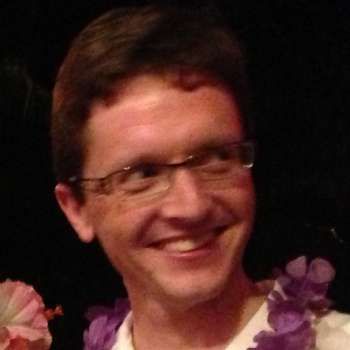“Digital”, “futuristic”, “an immersive virtual world”. Opera Australia’s marketing of their new, much-delayed Ring cycle heavily stressed its techno-futurist credentials. Its purported global reach was another selling point, with Chinese director Chen Shi-Zheng drawing freely on a range of different world cultures. Das Rheingold is certainly eclectic and, at best, visually stunning; at worst, it drifts towards empty spectacle, the “effects without causes” that Wagner hated.
The first scene and a half showcases what the digital screens could offer an imaginative production team. As the opening notes sound in the prelude, the main title is projected onto the curtain overlaid with Matrix-style streaming characters (here translations of Rheingold into other languages). Scene 1 is thoroughly successful: Leigh Sachwitz and flora&faunavisions offer us digital waves enlivened with bursts of phosphorescence as the backdrop for the action at the bottom of the Rhine, which takes place around a large piece of coral, beautifully lit by Matthew Marshall.
Doubled by aerialists ‘swimming’ on trapezes, the Rhinemaidens of Lorina Gore, Jane Ede and Dominica Matthews are lively, vocally assured teases. Their hapless-wooer-turned-villain, Alberich, played by Warwick Fyfe, unquestionably the standout in the cast for both his singing and acting. A veteran of this role in OA productions, Fyfe is costumed as if Kafka’s Gregor Samsa had stopped half-way through his metamorphosis into an insect.
Dark ribbons of smoke greet the theft of the gold, and we transition to the mountain-top realm of the gods, with its infinite dawn skies. The first nod to Eastern cultures (plural) is the sight of Wotan and Fricka being wheeled in on their joint throne in a seated yoga pose with flanking Chinese lion sculptures. Anita Yavich costumes the gods in white trench coats, while the two giants are black leather-clad techno-punks with two-tone mohawks and metallic hands.
Daniel Sumegi was a competent, devious Wotan while Deborah Humble was excellent as his much put-upon wife. Andrea Silvestrelli thrilled with his abyssal bass as Fafner, with David Parkin’s Fasolt most satisfying when not trying for too much volume. Hubert Francis’ Loge was a smooth operator who sang tirelessly through the evening.
In previous OA digital productions, there has been a tendency to over-use the boundless possibilities afforded by the technology. The same problem surfaces here in the scene where the gods confront the loss of their youth: is there any need for large digital busts of the gods to be subjected to gradual destruction, an effect which was both dramatically and technically crude? And while the light-show tracking the journey to Nibelheim is very well worked, when it comes to the return trip there is a failure to recognise that the music is much less driven this time around; instead, frenetic visuals mark an unconvincing transition into some kind of sci-fi world of moving circuitry.
Not that the production solely relies on technology, even where that might offer obvious advantages. Among the most challenging effects Wagner calls for are Alberich’s transformations: he first turns invisible, and later into a gigantic serpent and a toad. The first is not even attempted (one has to infer from the words of Mime, sung by the excellent Andreas Conrad, that Alberich has disappeared); the second is rendered by a Japanese bunraku-style puppet (moved by black-clad stagehands, which by tradition mean they are invisible) and, for the third, a simple green cloth is thrown over Fyfe’s head. When one considers what could be created digitally here, the effort expended on unnecessarily lavish backdrops seems all the more misguided.
Scene 4 is a curate’s egg: on the plus side is the entry through the floor of Erda, dressed in snaking branches and dreadlocks. Liane Keegan was an assured earth goddess, although not possessed of the biggest voice. Alexander Sefton demonstrated power in Donner’s thunder call; with the hair and hammer of Chris Hemsworth’s Thor, he might have done better in his multiple swings approaching the climax. On the downside, the prolonged stacking of gold to hide Freia makes no sense when she is entirely visible throughout.
The undoubted low point in the production comes at the end with the entry of dancers during the rainbow bridge music. Granted, the musical triumph of the conclusion is hollow and could indeed be visually undercut, but a troupe of gyrating, thigh-slapping dancers is a baffling distraction that only points to a bankruptcy of ideas. Luckily the orchestral sound was compensation of a kind: under the steady hand of Philippe Auguin, the Queensland Symphony Orchestra rose to the enormous challenges and were understatedly excellent all night. The preliminary evening is over. Let us hope for greater nights ahead.
David's travel to Brisbane was funded by Opera Australia




